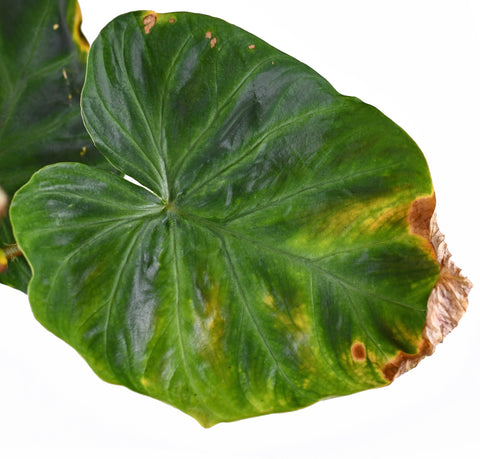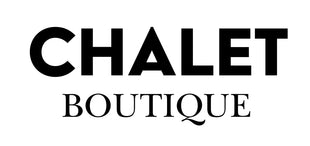What are these brown dots on my Philodendron?
By Emma Kelt, | Updated 29/05/2025
Related: What are the dots on the back of my Piper plant leaves?
Philodendrons are adored for their bold foliage and low-maintenance nature, but sometimes small brown spots appear on the leaves, and it’s not always clear why. In this article, we’ll explain four common causes: fungal leaf spots, water damage from misting, fertiliser burn, and extrafloral nectaries. We’ll break down what to look for, including whether the spots are raised, sunken, uniform, or random, and how to tell harmless marks from something that needs attention.
Fungal leaf spot, Damage, Leaf burning, & Extrafloral Nectaries

Fungal Leaf Spot on Philodendrons
Texture: Usually flat or slightly sunken
Pattern: Random and may appear on both upper and lower leaf surfaces
Colour: Brown to reddish-brown, sometimes with a yellow halo
Severity: Needs treatment and may spread if conditions stay humid
What it is:
Fungal leaf spots are caused by fungal pathogens that thrive in warm, humid conditions — especially where airflow is low. These fungi invade leaf tissue and begin to break it down, creating circular to irregularly shaped brown lesions. These spots may feel slightly soft or papery and can slowly enlarge if left untreated.
Where it appears:
These spots can show up anywhere on the leaf, including the undersides, and may begin near the veins where moisture tends to settle. They don’t usually follow a symmetrical pattern, and they’re not raised.
How to tell:
Spots may start small but become more defined over time
May be surrounded by a faint yellow ring (a plant’s natural defence)
In advanced stages, the centre may dry out and fall away, leaving a hole
What to do:
Remove affected leaves to stop the spread
Improve airflow around your plant
Avoid misting or letting water sit on the leaves
If it keeps recurring, treat with a copper-based fungicide, following label directions.
Fungal Leaf Spot and Extrafloral Nectaries (EFNs) can look incredibly similar at first glance, especially to new collectors. Both can appear as small brown or reddish spots, sometimes scattered across the leaf surface. But there are clear differences, and with the right checks, you can confidently tell them apart.
Summary: Quick Checklist
✔️ Raised, glossy, or sticky? → EFNs
✔️ Sunken, papery, or growing? → Fungal
✔️ Appears only on new healthy leaves, near veins? → EFNs
✔️ Random, spreading spots on older leaves? → Fungal
✔️ Sticky substance comes off? → EFNs
✔️ Tissue damage and no shine? → Fungal

📷 Leaf Burning from misting on a Philodendron
Water Damage and Leaf Burning from Misting
Texture: Flat and dry
Pattern: Random — usually scattered across top-facing leaves
Colour: Light brown with possible yellow halos
Severity: Cosmetic only, but avoid repeated misting to prevent it
What it is:
Although misting is often recommended for raising humidity, it rarely helps in any meaningful way, and it can do more harm than good. When water droplets are left sitting on leaves under bright light (natural or artificial), they can act like tiny magnifying glasses. This concentrates light and burns small sections of the leaf tissue, causing brown marks or small sunken patches.
Where it appears:
Typically on the top sides of leaves that are directly exposed to light. The damage often happens overnight when misting is followed by strong morning light or warm grow lights.
How to tell:
Spots appear shortly after misting
Often ringed with yellow or faded tissue
Not soft or spreading like fungal damage
No signs on the underside of leaves
What to do:
Stop misting as it's unnecessary and risky for Philodendrons
Use safer humidity-boosting methods like pebble trays, humidifiers, or grouping plants
Make sure your plant isn’t under intense direct light after watering

📷 Fertiliser burn on a Philodendron
Leaf Burning - Fertiliser Burn
Texture: Flat, crisp, or dry
Pattern: Often edges or tips of leaves, sometimes patchy if contact-based
Colour: Brown, yellow, or bleached; can start as yellowing that turns brown
Severity: Needs attention to prevent further root stress
What it is:
Fertiliser burn happens when a plant receives more nutrients than it can process — often from overfeeding or applying fertiliser incorrectly. The salts in fertiliser pull moisture away from plant roots, dehydrating them and damaging leaf tissue. It’s particularly common when fertiliser is applied too frequently, to dry soil, or when it splashes onto the leaves.
Where it appears:
Most often starts at the leaf tips or edges, since these are most vulnerable to moisture loss. If liquid fertiliser lands directly on the leaf, it can leave irregular patches where the foliage was burned.
How to tell:
Leaf edges go brown and crispy
Tips may turn yellow, then dry out
Soil may appear white or crusty on the surface (salt buildup)
The damage doesn't spread, but new growth may also be affected
What to do:
Flush the pot thoroughly with clean water to wash out excess salts
Don’t fertilise again for a few weeks
Scrape off and replace the top layer of potting mix if salt is visible
For severe cases, repot into fresh mix — but do so gently to reduce shock
Always fertilise damp soil, never dry, and follow product instructions carefully

Extrafloral Nectaries on Philodendrons
Texture: Flat or slightly raised, sometimes sticky
Pattern: Random or linear along veins or midrib
Colour: Shiny, amber, translucent, or dark brown once dried
Severity: Harmless and completely natural
What it is:
Extrafloral nectaries (EFNs) are small glands that secrete sugary nectar. They are part of a plant’s natural defence system — attracting beneficial insects like ants that deter herbivores. They are not a disease, pest issue, or sign of stress. In fact, they’re a sign your plant is mature enough to produce them.
Where it appears:
EFNs can be found on the top or underside of leaves, often along the midrib, at the base of the leaf, or scattered along prominent veins. They may show up more clearly on darker-leaved Philodendrons.
How to tell:
Dots may be sticky when fresh
They don’t change shape or size
They're not sunken, not soft, and don’t spread
Often more visible after watering or in high humidity
What to do:
Nothing! You can gently wipe them if you prefer, but they’re not a problem
No need for sprays or treatment, they’re completely natural
Don’t confuse them with pests, they don’t move or cause harm
🔍 Brown Spots on Philodendron: How to Tell the Difference
| If it has... | It’s likely... | It’s probably not... | Why |
| Small, shiny, flat or slightly raised dots that are sticky or dry | Extrafloral nectaries | Fungal leaf spot, water damage, fertiliser burn | EFNs are harmless and part of the plant’s natural defences. They don’t spread or sink. |
| Spots appear sunken, with possible yellow halos and spreading | Fungal leaf spot | EFNs, fertiliser burn, water damage | Sunken spots with halos often indicate a pathogen. These usually grow or multiply. |
| Crispy brown edges or tips, sometimes yellowing beforehand | Fertiliser burn | Fungal leaf spot, EFNs | Fertiliser burn dries out leaf margins from the outside in — not circular, and not sticky. |
| Flat, random brown spots with a faint yellow ring after misting | Water damage (burn) | Fungal infection, EFNs | Happens after water sits on leaves in bright light. Doesn’t grow or spread. |
| Spots only appear near the midrib or veins, not spreading | Extrafloral nectaries | Fungal leaf spot | EFNs often cluster along veins, especially on darker leaves. No yellowing or soft tissue. |
| Brown dots that look blistered, raised, or scabby | Possibly edema | EFNs, fungal leaf spot | Edema is caused by water imbalance, but it’s less common than the others here. |
| Dots feel papery, and leaf tissue seems weak or translucent | Fungal leaf spot | EFNs, fertiliser burn | Sign of breakdown in leaf tissue from fungal infection. |
| New growth also has similar spotting | Fungal issue or overfeeding | EFNs (which don’t appear only on new growth) | Ongoing stress shows up in newer leaves — EFNs are consistent across older, healthy ones. |
| Spots appeared immediately after fertilising or misting | Fertiliser burn or water damage | Fungal infection or EFNs | Timing is a big clue. EFNs form over time, not suddenly. |
| White crust on soil surface, plus brown tips | Fertiliser burn | Fungal issue, EFNs | Salt buildup from overfeeding leads to leaf damage and visible mineral crusts. |
If you notice brown spots on your Philodendron, don't panic. In many cases, it's just your plant doing what it naturally does, or it's something easily prevented or corrected. By looking closely at the texture, location, and pattern of the spots, you can work out what’s going on and respond accordingly.
Keep your plant in a spot with good airflow, avoid misting, feed gently, and give it time to adjust after changes. And remember, not every mark is a problem. Some, like extrafloral nectaries, are just a sign your plant is growing well.
Happy planting! 🌿
Read Next: Philodendron Mamei & 'Silver Cloud': How To Tell These Plants Apart











Comments
Anni said:
Thank you, this was very helpful!
Sarakian said:
It was very useful for me.
Thank you❤